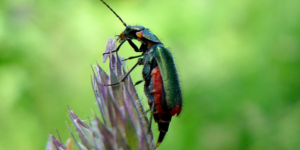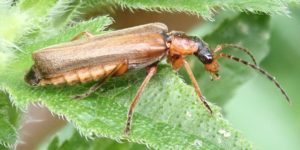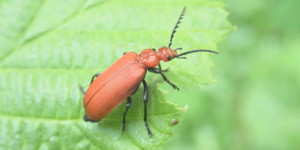Meier Group
Genomics of rapid speciation and adaptation
Our work
We are evolutionary biologists using genomics to study the rapid emergence of new species, i.e. speciation, and adaptation. We work on different groups of animals and plants that show large variation in the speed of speciation. We compare fast and slowly speciating lineages within those groups to assess the factors that contribute to rapid speciation. We are particularly interested in the roles of chromosomal rearrangements, the genetic basis of relevant traits and the effects of interbreeding.
Genomic data has revealed that interbreeding is much more widespread in nature than anticipated. Interbreeding can lead to the fusion of species and thus biodiversity loss. However, recent work, including ours, shows that sometimes interbreeding can lead to exchange of genetic variants between species that can speed up adaptation and speciation. Interbreeding can generate populations of mixed ancestry with novel combinations of gene variants that can evolve into new species. Usually adaptation is very slow, as the waiting time for beneficial mutations is long. However, interbreeding can speed up the process as adaptive gene variants can be exchanged between species. Sequencing genomes allows us to identify instances of interbreeding at different points throughout the evolutionary history of species. We can trace back the origin of genetic variants and thus understand the impact of interbreeding on biodiversity.
Genomic data analysis also allows us to identify genes that contribute to speciation and adaptation. We can then study how these genes are arranged on the chromosomes. Some of the species we study show vast variation in chromosomal numbers and we investigate how chromosomal fusions, fissions and translocations contributed to their rapid diversification. Such chromosomal rearrangements can contribute to speciation because populations with different chromosomes may not be able to interbreed successfully, or because rearrangements may link together co-adapted genes.
We work collaboratively with research partners around the globe, studying a diverse range of animals and plants across the tree of life. Our aim is to find the universal underlying genomic mechanisms of rapid evolution; so we are open to collaborations that will enable us to apply large-scale sequencing and analysis to any groups that best represent different forms of fast evolution in action.
Two of the key taxonomic groups that we study represent quite different forms of evolution. Ithomiini and Heliconius butterflies form adaptive radiations, whereby different species utilise different host plants for their caterpillars. In contrast, the driving force behind speciation in Australian peacock spiders appears to be sexual selection. Females choose their mates based on species-specific colours, dances and vibrational “songs”. In addition, we also study the role of hybridisation in the rapid range expansion of wall lizards in Switzerland.
Ithomiini butterflies – genomics of adaptive radiations

We study ithomiini butterflies in partnership with collaborators in Ecuador, Colombia, Brazil, France and the UK. The species richness is very unevenly distributed in this tribe of South American butterflies. Some ithomiini genera have speciated rapidly in the past million years, whereas their close relatives have speciated at a much slower, more normal pace in the order of millions of years. We use whole-genome sequencing to compare slowly and fast speciating genera to identify drivers of rapid speciation. For example, by assembling many reference genomes, we study the role of chromosomal evolution. Closely related ithomiini species differ strongly in the number of chromosomes, ranging from 5 to 120 chromosomes. We seek to identify the genomic mechanisms at play that drive chromosomal change and its role in the rapid diversification in some genera.
Another focus is on the role of hybridisation (interbreeding). While interbreeding between species mostly leads to hybrids with low fitness, it can sometimes be beneficial by enriching the genetic diversity and thus providing the fuel for rapid adaptation or speciation.
Ithomiini butterflies form “mimicry rings” with lots of species converging on the same warning colour patterns that birds learn to associate with “do not eat”. We study the genetic basis of the colour pattern differences and the role of interbreeding in facilitating mimicry ring switches.
Different parts of this project are led by Patricio Salazar (fieldwork), Eva van der Heijden (genetics of colour pattern differences), Karin Näsvall (chromosomal evolution) and Joana Meier. We work together in strong collaboration with Caroline Bacquet at the Amazonian University Ikiam in Ecuador. At Ikiam, Kimberly Gavilanes, María José Sánchez, Alex Arias and Franz Chandi perform the experimental work of our group, including crossing of butterflies, CRISPR and wing disc dissections. The butterfly stocks are strong thanks to the expertise and dedication of Natalia Mariel Falcón, keeping the plants happy.

Sex chromosome - autosome fusions
Heliconius butterflies are another well-known adaptive radiation in the Americas. The genetic basis of their colour pattern differences are well-studied and like ithomiini butterflies they are a model for Müllerian mimicry, i.e. species resemble each other in warning colours and thus share the cost of teaching birds that they are not to b e eaten. However, recently we discovered that they might also be a great model for studying the evolution of sex chromosomes through fusion of sex chromosomes with autosomes. Butterflies have ZW sex determination, which means that females have two different sex chromosomes, and males have two Z chromosomes. We discovered that the species in the Heliconius sapho group have fused their W chromosome with autosomes in three fusion sequential events. This is particularly intriguing as the Heliconius sapho group stands out in having way more chromosomes (up to 60) than the rest of the Heliconius species (21 chromosomes). Nicol Rueda and Joana Meier are currently investigating the evolutionary forces behind these fissions of chromosomes and fusions of sex chromosomes with autosomes.
e eaten. However, recently we discovered that they might also be a great model for studying the evolution of sex chromosomes through fusion of sex chromosomes with autosomes. Butterflies have ZW sex determination, which means that females have two different sex chromosomes, and males have two Z chromosomes. We discovered that the species in the Heliconius sapho group have fused their W chromosome with autosomes in three fusion sequential events. This is particularly intriguing as the Heliconius sapho group stands out in having way more chromosomes (up to 60) than the rest of the Heliconius species (21 chromosomes). Nicol Rueda and Joana Meier are currently investigating the evolutionary forces behind these fissions of chromosomes and fusions of sex chromosomes with autosomes.
Ithomiini butterflies also show a large number of fusions between sex chromosomes and autosomes. The comparison of sex chromosome fusions in Heliconius and ithomiini butterflies will allow us to identify general patterns that lead to sex chromosome fusions.
Peacock spiders - genomics of radiations driven by sexual selection

Peacock spiders have also speciated rapidly but, in contrast to ithomiine butterflies, their differentiation is likely driven by sexual selection. Peacock spider species differ in elaborate male mating displays that include the presentation of raised colourful abdominal flaps and conspicuous legs, specific movements and vibrational “songs”. There are currently over 100 species of peacock spiders described in two sets of evolutionary radiations. However, every year many new species are discovered, some of which we are currently describing.
We study the roles of interbreeding and chromosomal evolution in the diversification of the peacock spiders. In addition, we assess the speed of evolution and the genetic architecture of male mating traits. This integrative project combines comparative genomics and population genomics with sensory ecology.
It is led by Jonah Walker and Joana Meier. We work closely with partners at the Universities of Sydney, Berkeley, and Hamburg.
Beetle chromosomal evolution
Arif Maulana, Kamil Jaron and Joana Meier are studying chromosomal rearrangements across the largest animal order – Coleoptera – using hundreds of chromosomally resolved reference genomes. The genomes are mostly from the Darwin Tree of Life project. We aim to elucidate why some lineages have undergone many chromosomal fusions and fissions, whereas others are relatively stable in terms of karyotype. Similarly, there is variation in how much the order of the genes of each chromosome is maintained versus reshuffled. We study if increased chromosomal rearrangement rates are associated with species diversification.



Rapid range expansion of wall lizards in Switzerland
Invasive species are on the rise, as human activity has increasingly facilitated their spread across the globe. However, most introduced species do not become invasive. Understanding why and how species spread rapidly is thus of high importance.
In the past two decades, wall lizards (Podarcis muralis) have rapidly expanded their distribution range in Switzerland. Wall lizards are native in Switzerland, but many of the lizards in the rapidly spreading populations look different to the native ones, indicating that they might be of a different subspecies. We study if the rapidly spreading wall lizards represent native, introduced or hybrid subspecies. Hybridisation can facilitate rapid adaptation and rapid range expansion by enriching the genetic diversity. In a preliminary study around Lake Thun, we found that the rapidly spreading populations are all admixed between 3-4 subspecies of wall lizards, including the native lineage, Italian wall lizards and other lineages from South of the Alps. These lineages are multiple million years divergent but are still able to hybridise. We are currently investigating if this finding is a general pattern, and if and how admixture contributed to the rapid range expansion of wall lizards across Switzerland.
This project is led by Arif Maulana and Joana Meier and carried out in collaboration with researchers from the KARCH (Swiss Reptile and Conservation Centre) and the Lund University in Sweden. Former lab member, Anna Orteu, was also a key member of this project.

Project Psyche - sequencing butterflies and moths for Europe
Together with Charlotte Wright and Mark Blaxter, Joana Meier co-leads Project Psyche – sequencing all European butterflies and moths. A short summary can be found on the Sanger Collaboration website, and more detailed information is on our project website. This project is highly collaborative with many partners across Europe and while the main aim is to generate high-quality reference genomes for butterflies and moths, an important second aim is to generate a platform for the coordination of collection and sequencing efforts and knowledge sharing of lepidopteran taxonomy, biology and genomic analyses, including joint fieldwork trips to collect specimens and workshops to analyse the genomes. If you want to join this effort let us know! We have a COST Action that allows us to bring together interested people, independent of their financial resources. Joana Meier, Charlotte Wright and Mark Blaxter are all working group leaders and Joana Meier is the UK management group representative together with Konrad Lohse (U Edinburgh, UK).

Other large-scale sequencing projects we contribute to
Project Psyche builds on the Darwin Tree of Life Project, which we also contribute to.
Darwin Tree of Life Project – sequencing reference genomes of eukaryotes of the British Isles
Marco Meyer, Jonah Walker and Joana Meier contribute to the Darwin Tree of Life Project – sequencing all UK eukaryotes – by boosting the collection and sequencing efforts for spider genomes.
LepEU – population genomics of butterflies across Europe
Joana Meier and Charlotte Wright are the UK collection coordinators for LepEU, a large resequencing project led by Chris Wheat (U Stockholm, Sweden), Mathieu Joron (CEFE, France) and Patricia Beldade (Lisbon, Portugal). The aim is to generate population genomics datasets of the same butterfly species across many European countries to allow for large-scale popgen analyses such as comparing the genetic diversity across geographic regions, local selective sweeps, gene flow among the regions, etc. This project is facilitated by Project Psyche, which contributes the reference genomes for LepEU.
LepEU is also powered by our COST Action facilitating collaboration across Europe.
International webinar series
Lepidoptera Seminar Series
Together with Gabriela Montejo-Kovacevich (University of Cambridge), we run a webinar series on Lepidoptera research, short Lepinar. We host a Lepinar every other week on Mondays at 4 pm UK time. If you would like to join the mailing list, subscribe here.
Speciation Seminar Series
As part of the network for Integration of Speciation Research (IOS), we are running a monthly seminar series on speciation research. In order to facilitate participation across time zones, we alternate the time of the day these seminars take place. The IOS network will also host a database on speciation case studies and provide networking opportunities in the form of workshops. It is financed by the European Society of Evolutionary Biology and the committee includes eleven researchers from 10 Universities from different countries. Everyone interested in speciation should sign up to the mailing list.
Workshops with public tutorials
Speciation Genomics Course
Together with Mark Ravinet (University of Nottingham), Joana Meier has been teaching a course on speciation genomics with Physalia. The course takes the attendees all the way from raw Illumina reads to finding population structure, demographic modeling and identifying genomic regions with signatures of selection or introgression. As part of this course with we have generated a public how-to-guide.
Biodiversity Genomics Course
In August 2024, Karin Näsvall, Nicol Rueda and Joana Meier taught a one-week course on biodiversity genomics at Ikiam University in Ecuador, as part of the Neotropical Lepidoptera conference. It was attended by students and researchers across Latin America. All course materials can be found here.
Population and Speciation Genomics Workshop
Joana Meier teaches at this 2-weeks workshop in Cesky Krumlov. It is an intensive course on all things speciation genomics from demographic history inference, machine learning to identifying genes under selection.
Join our team
We are always keen to work with curious and creative evolutionary biologists. If you would like to partner with the team on a new project or become a member of the group, please contact Joana Meier by email.
Core team

Arif Maulana
PhD Student

Dr Karin Näsvall
Postdoctoral Fellow

Dr Nicol Rueda
Postdoctoral Fellow

Dr Patricio A. Salazar-Carrión
Postdoctoral Fellow

Dr Fernando Seixas
Senior Bioinformatician

Jonah Walker
PhD Student
Previous core team member

Dr Anna Orteu
Postdoctoral Fellow
Related groups
Partners
We work with the following groups
External
Branco Weiss Fellowship
Joana Meier has a Branco Weiss Fellowship at the University of Cambridge
